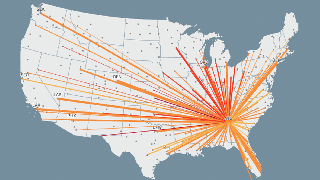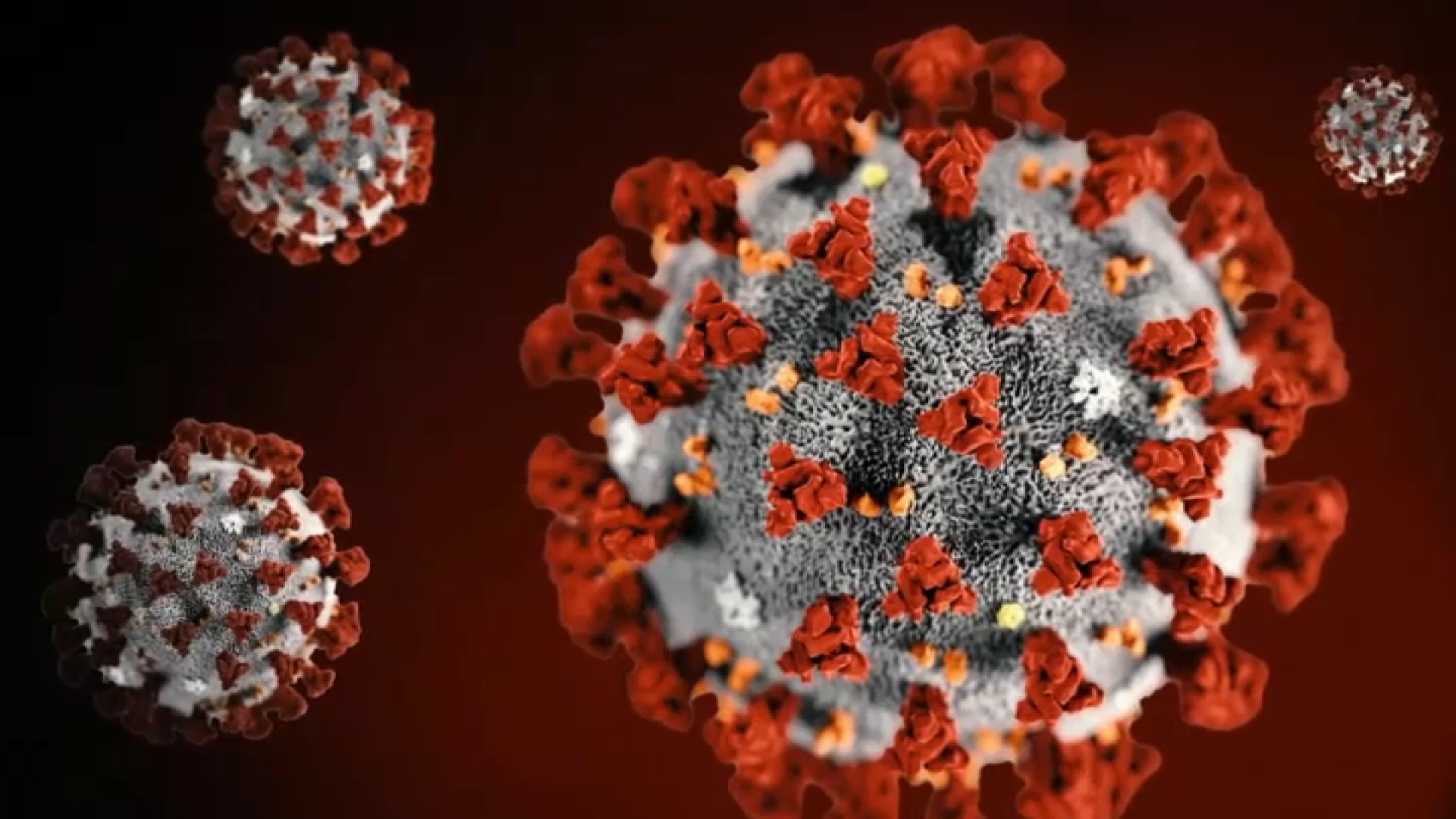
While air travel is down from 2019, the pandemic and its recent grim milestones didn’t deter many Americans from flying over the Thanksgiving holiday. Thousands of flights zoomed in and out of areas fighting the recent COVID-19 surge, according to flight tracking data.
An NBC analysis of data provided by Flightradar24, a global flight tracking service, found that during the week of Thanksgiving, close to 90% of all U.S. passenger flights departed from airports in areas where the COVID-19 risk level was critical.
Note: The map shows domestic passenger flights from Nov. 23 to 29. The arrows are sized according to number of flights and colored according to the average incidence rate of all counties within 25 miles of the departure airport. The risk level for those areas was determined using a system devised by the Harvard Global Health Institute. Source: Flightradar24; Johns Hopkins University; U.S. Census Bureau
Amy O’Kruk/NBC
Our analysis assigned risk levels using a system developed by the Harvard Global Health Institute. Under this model, counties exceeding 25 daily new cases per 100,000 people are considered to be battling a severe outbreak, where spread is at the tipping point of becoming uncontrollable and stay-at-home orders are advised.
Counties that have fewer than one daily new case per 100,000 people are low risk, one to 9 is medium and between 10 and 24 is high.
While the flight data didn’t include passenger totals, it points to broad trends: infection rates are high across the country and many Americans are still choosing to travel for the holidays despite them.
Experts, including top infectious disease expert Dr. Anthony Fauci, predict that the uptick in holiday travel could cause a virus surge on top of the current swell, potentially leading the country into one of the most difficult periods of the coronavirus pandemic.
Coronavirus Pandemic
Full coverage of the COVID-19 outbreak and how it impacts you
“We haven’t had a lot of people flying around during an epidemic surge like we do now,” said Dr. Abraar Karan, a doctor and global health expert at the Brigham and Women's Hospital and Harvard Medical School. “This is the first time we have this really bad combination of a lot of infected people and more full flights.”
He said the danger of travel is two-fold: Not only is there risk of exposure en route, such as on the plane, but also from everyone a traveler interacts with during their visit.
The full effects of Americans’ recent movements on the pandemic are still developing. Karan said a virus surge happens in three parts. First, a lot of people begin to test positive after COVID-19’s incubation period, which is around 2 to 14 days according to the CDC. Next, as the virus spreads to older and vulnerable populations, hospitalizations increase. The higher the resource burden on the hospital, the higher the risk of mortalities.
“There are some parts of the country where this is already happening. COVID-19 has a very staggered epidemiological spread. Places are going to be hit really hard at different times,” he said.
If Thanksgiving is any indication, many people will also travel for Christmas despite pleas from health authorities to stay put. While the Transportation Security Administration reported this year’s holiday screenings at Thanksgiving fell by more than half compared to last year, they still tallied about 9.5 million passengers between Nov. 20 and Nov. 29.
Total flights are down too, but not as much as passenger volume. Overall, Flightradar24 recorded about 108,300 domestic passenger flights between Monday, Nov. 23, and Sunday, Nov. 29. The number of active flights over North America on the Tuesday before Thanksgiving was 6,972 -– 91% of last year’s 7,630.
The highest traffic routes were between Seattle and Portland, Atlanta and Orlando and Los Angeles and San Francisco. Southwest Airlines logged the most flights at 21,243, followed by Skywest Airlines and Delta Air Lines.
For Americans who must fly this month, the CDC recommends travelers get tested before the flight and three to five days afterward. David Freedman, an infectious disease specialist at the University of Alabama at Birmingham, said to look for airlines that aren't filling every seat. On the plane, people should wear a mask at all times, avoiding taking one off to eat or drink on short-haul trips if possible.
Looking toward the winter, he said individuals must be vigilant about social distancing, hand washing and other proactive measures. Things could get a lot worse before they get better.
“The more infected people that get onto planes, the more spread there’s going to be,” said Freedman. “The majority of the population isn’t going to get the vaccine for a while, at least next summer for everyone, and that's the best case scenario.”
Methodology:
Flightradar24 tracks flights using receivers that pick up aircraft signals. The service provided departure and arrival data for domestic passenger flights for the week of Thanksgiving: Monday, Nov. 23 to Sunday, Nov. 29.
For that same week, we calculated the average daily incidence rate of new cases per 100,000 people for every U.S. county based on data from Johns Hopkins University and the U.S. Census Bureau.
Many airports were on county edges. To try and account for the likelihood that travelers will choose an airport based on proximity rather than county divisions, for each airport, we calculated an average incidence rate based on all counties within a 25-mile radius. We used that number to assign each airport area a risk level based on guidelines from the Harvard Global Health Institute.
A limitation of this is that the flight data does not include passenger totals. The analysis is meant only to give a rough idea of Thanksgiving travel trends as they relate to COVID-19 rates.
Please note the analysis only includes the continental U.S.



